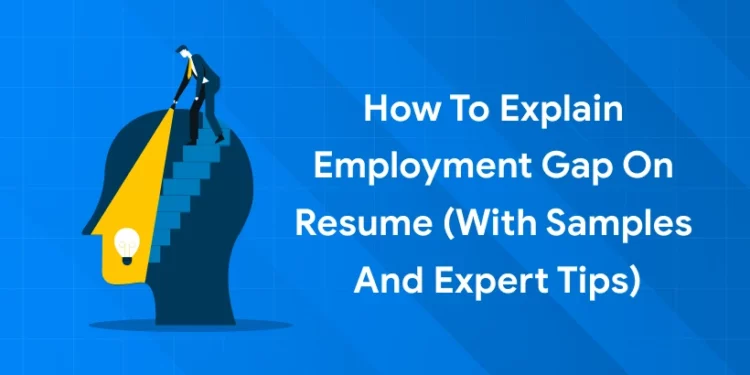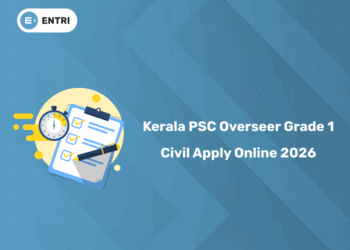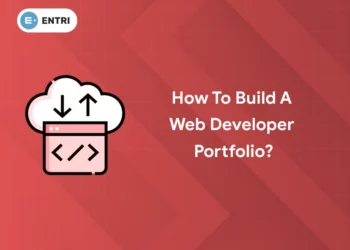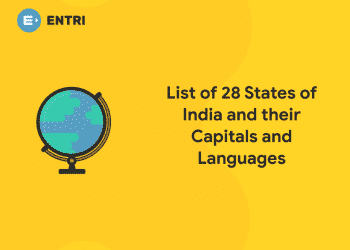Table of Contents
Key Takeaways:
- Employment gaps are a common experience and can be framed positively to show growth.
- Explaining gaps clearly on your resume, cover letter, and interviews helps build trust with employers.
- Using the right resume format, like functional or combination, can shift focus to skills.
- Highlight activities like courses, volunteering, or personal projects during your break.
- Preparation, positive framing, and confidence in discussing gaps improve hiring chances.
Introduction
Employment gaps can create anxiety when updating your resume or preparing for job applications. Whether caused by illness, caregiving responsibilities, further education, or career reassessment, these breaks can sometimes feel like obstacles rather than opportunities. Many job seekers worry that recruiters will perceive these gaps negatively, potentially questioning their commitment or reliability. However, the reality today is more understanding—employment gaps are increasingly common and often viewed as a normal part of life’s transitions.
If approached thoughtfully, employment gaps can actually serve as valuable parts of your career story. They reflect times of personal growth, skill refinement, or essential life experiences that shape your professional outlook. This blog explores how to effectively and authentically explain those gaps, whether on your resume, in your cover letter, or during interviews. The goal is to empower you to face this topic with honesty and confidence, turning what may seem like a weakness into a strength.
Why Explaining Employment Gaps Matters
Unexplained gaps on a resume can leave potential employers guessing—and often, assumptions are less flattering than reality. Recruiters want to understand your employment timeline to assess your fit and reliability for a role. When a gap is unaddressed, it may raise concerns about your stability or reasons for leaving.
Clear communication about employment gaps:
- Establishes credibility by embracing transparency
- Reduces doubts and builds a foundation of trust
- Shifts focus to proactive steps taken during the gap
- Helps recruiters appreciate your self-management skills
- Demonstrates that you can face challenges and grow from them
Remember, your employment gap is only one part of your overall profile, and explaining it well ensures it does not overshadow your qualifications or accomplishments.
Boost Your Skills & Kickstart Your Career!
Employability and Personality Development Course by Entri App: Enhance your communication, confidence, and job-ready skills to excel in your career.
Join Now!How to Explain an Employment Gap on Your Resume
1. Be Honest and Transparent
Honesty is the best policy when it comes to employment gaps. Recruiters value authenticity, and trying to hide gaps can backfire, especially if discovered later in the hiring process. Being upfront about breaks shows confidence and maturity. Include the gap in your timeline and use a few words to explain what you did during that time.
2. Use a Functional or Combination Resume Format
If you have multiple gaps or a long employment break, changing your resume format can help. The traditional chronological resume emphasizes dates and can highlight gaps. Instead, a functional resume focuses on skills and achievements—ideal for shifting attention away from timelines. A combination resume mixes both, allowing you to showcase skills upfront while still providing work history with brief gap explanations.
3. Include a Brief Explanation of the Gap
Simply listing dates may confuse or concern employers. Add a line or two explaining why you took the break. Examples include:
- “Sabbatical for family caregiving and professional development”
- “Full-time study to complete certification in data analytics”
- “Career pause for health recovery and skill enhancement” This helps recruiters see your gap as a purposeful, positive phase.
4. Highlight Growth or Activities During the Gap
One way to reinforce your value is by showcasing productive uses of your time off. Mention relevant online courses, workshops, freelance projects, volunteering, or other activities that kept you engaged in your field or helped build transferable skills. For example:
- “Completed a course in Advanced Digital Marketing, earning certification”
- “Volunteered as social media coordinator for a community non-profit”
- “Developed and launched a personal blog focusing on industry trends”
5. Remove Old or Insignificant Gaps
If gaps are distant in the past—10 years or more—or minor (a few weeks), they can be omitted for clarity and focus. Your resume should ideally cover the last 10-15 years of relevant experience, making it wise to exclude unrelated old gaps.
Practical Samples for Explaining Employment Gaps
Providing concrete examples helps readers visualize how to frame their own employment gaps. Here are sample formats and phrasings that can be adapted to different situations.
Sample Resume Entries for Employment Gaps
Example 1: Career Break for Caregiving
Full-Time Caregiver | Family Member Jan 2022 – Dec 2023 - Provided dedicated support and care for an elderly family member - Utilized this time to complete online courses in time management and communication skills - Maintained up-to-date industry knowledge through webinars and online networking Example 2: Education or Certification Break
Professional Development | Self-Directed Learning Sep 2021 – Jun 2022 - Pursued advanced certification in Digital Marketing through XYZ Institute - Applied learnings in freelance projects focused on social media campaigns - Expanded skills in SEO, content creation, and analytics Example 3: Personal Project or Volunteer Work
Volunteer Coordinator | Community Food Bank Mar 2020 – Feb 2021 - Organized food drives providing weekly meals to over 300 families - Managed and trained a team of 15 volunteers - Developed marketing materials and social media outreach to increase donor engagement Example 4: Short-Term Gap Omission
If the gap was less than 6 months or a few weeks, consider listing years only to downplay it:
Marketing Specialist | Company ABC 2019 – 2021Sample Cover Letter Explanation for Employment Gap
During 2022-2023, I took a planned career break to care for a family member who required full-time support. During this time, I also pursued professional development by completing certifications in project management and digital marketing. This break helped me gain valuable skills and renewed motivation to contribute effectively in my next role. I am eager to bring my refreshed expertise and commitment to your team.
Boost Your Skills & Kickstart Your Career!
Employability and Personality Development Course by Entri App: Enhance your communication, confidence, and job-ready skills to excel in your career.
Join Now!Sample Interview Response for Employment Gap
“I took a year off to care for a family member who was seriously ill. During that time, I took online courses to update my skills and stayed connected with industry developments through webinars and networking. Now that my family situation stabilised, I’m fully ready and excited to re-enter the workforce. This experience strengthened my time management and adaptability, which I’m keen to apply in this role.”
Tips for Customizing Samples
- Tailor your explanation to your specific situation while keeping the tone positive and professional.
- Focus on what you learned or achieved during the gap.
- Keep explanations concise but informative.
- Always reassure readiness and enthusiasm for the role you’re applying to.
How to Address Employment Gaps in Cover Letters
Your cover letter offers a wider canvas to tell the story behind your resume gap. Unlike the brief note on a resume, here you can explain with more warmth and nuance.
Give a Valid Reason
Start by concisely stating the reason for your break. For example: “I took a career break to support family needs” or “I paused my career to complete a professional certification.”
Highlight New Skills or Experiences
Use this opportunity to explain what you learned or achieved during the break. For example: “During this period, I enhanced my project management skills through online courses and practical freelancing.”
Frame the Gap as a Time of Growth
Show how the break helped you reflect, learn, or prepare for your next role. Example: “This time allowed me to reassess my career goals and renew my passion for marketing innovation.”
Avoid Oversharing Personal Details
Keep the tone professional without divulging sensitive personal information. It’s enough to acknowledge a reason like health or burnout without going into specifics.
Reassure Your Readiness
End by affirming your excitement and readiness to contribute: “I am eager to bring my refreshed skills and dedication to your team.”
Discussing Employment Gaps in Interviews
Prepare Your Explanation in Advance
Anticipate questions about your gap and practice clear, confident responses. Preparation helps you avoid hesitation and negative tones.
Focus on What You Did Right
Shift the conversation toward your strengths before and during the gap. Talk about skills you developed, projects you undertook, or insights gained.
Avoid Negative Talk
Even if your gap was caused by layoffs or difficult circumstances, refrain from blaming others or complaining. Stay positive and forward-focused.
Highlight Readiness and Enthusiasm
Express eagerness to contribute immediately. Show that any obstacles are behind you and you are motivated to excel.
Example Interview Response: “I took a year off to support a family member and used that time to complete certifications in my field. I’ve kept up with industry trends and am keen to apply new skills in this role.”
Good Reasons for Employment Gaps (That Employers Understand)
Employers are increasingly understanding of life circumstances. Common, acceptable reasons include:
- Family Responsibilities: Parenting, caregiving for ill relatives, or managing family emergencies.
- Further Education: Going back to school or pursuing professional certifications to upgrade skills.
- Health Reasons: Recovering from illness or injury.
- Career Reassessment: Taking time for personal growth or clarifying professional goals.
- Travel or Sabbatical: Enriching experiences or needed rest that refreshed motivation.
- Layoffs or Downsizing: Market conditions leading to job loss, not performance issues.
- Entrepreneurial Pursuits: Starting or managing a business venture, including failed startups.
These reasons can be shared with confidence when framed in a positive light and accompanied by proof of growth or renewed commitment.
Practicing Positive Language That Works
The way you frame your gap matters as much as what you say. Use proactive, growth-oriented expressions such as:
- “Used the time to upskill in X area through certification programs.”
- “Engaged in volunteer work that enhanced leadership and teamwork.”
- “Launched a personal project that developed my strategic planning skills.”
- “Reassessed and realigned my career paths to better fit my strengths.”
- “Focused on mental and physical health to return to work energized.”
Such language signals your ability to turn challenges into opportunities.
Entri’s Career Level-Up Course
If employment gaps have affected your confidence or communication skills, Entri’s Career Level-up Course offers a fantastic opportunity to sharpen your professional presence. This course teaches effective communication, interview strategies, and self-presentation—all crucial for confidently handling employment gap questions and impressing recruiters. By enrolling, you’ll gain tools to showcase your best self and land your desired job. Explore the course here and take your career to the next level.
Conclusion
Employment gaps are natural parts of many career journeys—they don’t have to hold you back. When explained with honesty, positivity, and confidence, gaps can demonstrate your resilience and commitment to growth. By carefully crafting your resume, cover letter, and interview answers, you can move past any doubts employers may have and highlight the value you bring.
To further empower your return to work and boost your professional skills, consider enrolling in Entri’s Personality Development Course. This course is an excellent way to build communication skills, interview readiness, and confidence needed to present yourself strongly to employers. Take the first step toward leveling up your career today!
Boost Your Skills & Kickstart Your Career!
Employability and Personality Development Course by Entri App: Enhance your communication, confidence, and job-ready skills to excel in your career.
Join Now!Frequently Asked Questions
Should I mention every employment gap on my resume?
Minor and old gaps (10+ years ago or a few weeks) may be omitted. Recent or longer gaps should have brief, clear explanations.
How much detail do I give about the gap?
Provide context and positivity but avoid oversharing personal details. Keep it professional and relevant to the job.
Can a gap sometimes improve my resume?
Yes, if the gap is explained as a time of skill-building, learning, or productivity, it can demonstrate resilience.
What if the gap was due to a layoff or job loss?
Be honest, focus on what you did during the gap, and emphasize your readiness for new opportunities.
How do I practice explaining gaps for interviews?
Prepare a concise, positive explanation, rehearse with friends or mentors, and focus on confidence and calm delivery.

















